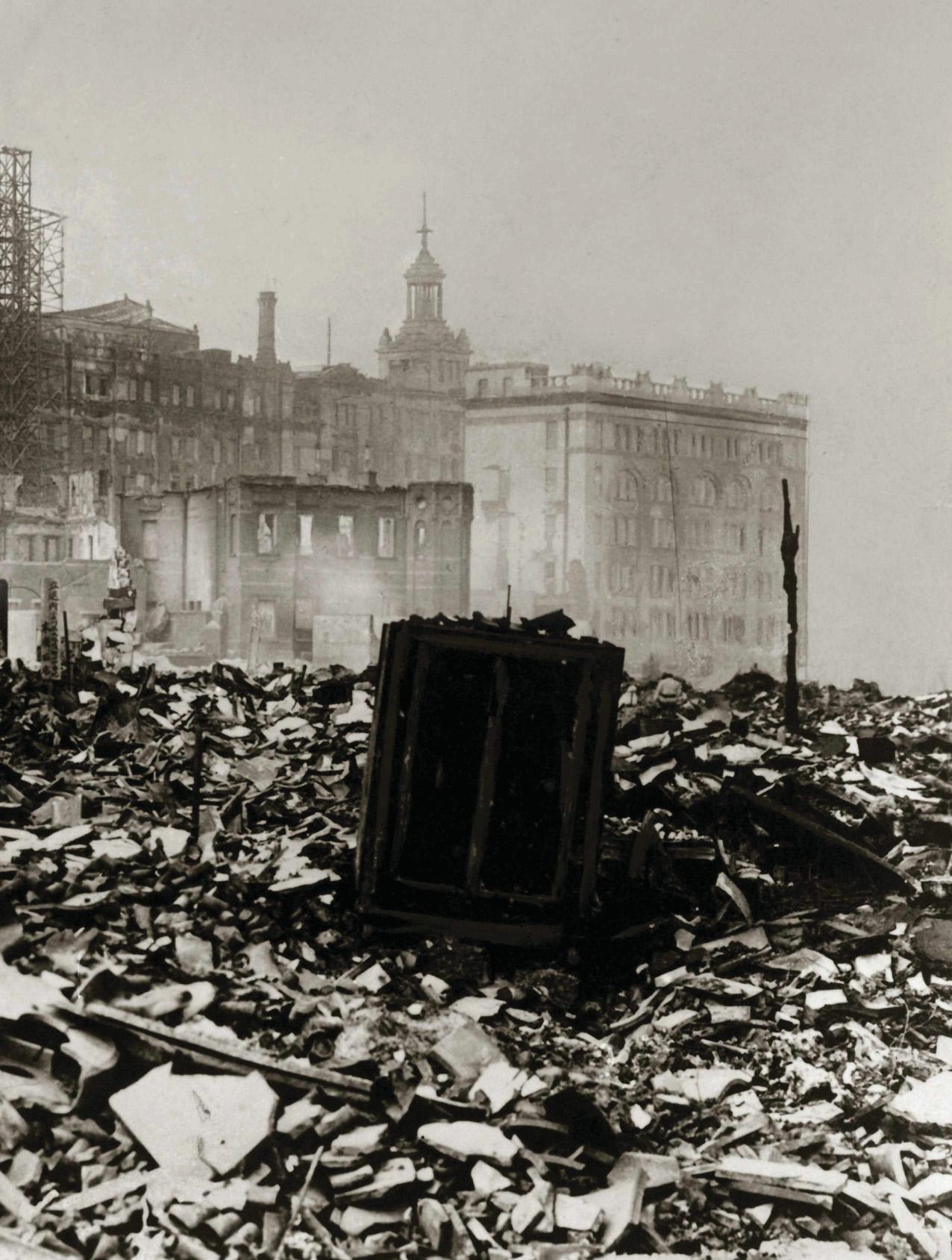
Shortly before noon on 1 September 1923, people in Tokyo and the nearby port city of Yokohama felt the ground beneath them shake. It was not especially unnerving: this region of Japan, the Kanto Plain, stood at the meeting point of four tectonic plates. Tremors were common, and usually passed after a few seconds.
On this occasion, though, they continued - for five seconds, then 10- and were so powerful that people were forced to reach out to steady themselves and catch possessions as they fell. After around 15 seconds, sideto-side movement suddenly gave way to something much worse: violent vertical convulsions of such devastating power that they could be felt as far away as Spain in one direction and California in the other.
In past centuries, some in Japan had associated earthquakes with the restive movements of a giant catfish living deep within the Earth. People in Tokyo and Yokohama now gained a visceral, terrifying sense of why that belief might have taken root. The shockwaves caused the ground beneath their feet to undulate. Objects did not just fall- they jumped off the floor, accompanied by an angry, ominous rumble that was soon drowned out by the noise of brick and concrete buildings collapsing, tiles crashing from roofs and people shouting and screaming.
The cacophony briefly gave way to an eerie quiet as people took in what had happened. Stepping out of homes or shops to survey the landscape around them, they began to think of relatives and friends and the need to escape. As the first of many hundreds of aftershocks arrived, the streets of Tokyo filled with people trying to flee to the countryside. The prospect of further tremors to come was worrying enough; far worse was the peril that some could already smell on the air: fire.
Revitalised nation
This story is from the {{IssueName}} edition of {{MagazineName}}.
Start your 7-day Magzter GOLD free trial to access thousands of curated premium stories, and 9,000+ magazines and newspapers.
Already a subscriber ? Sign In
This story is from the {{IssueName}} edition of {{MagazineName}}.
Start your 7-day Magzter GOLD free trial to access thousands of curated premium stories, and 9,000+ magazines and newspapers.
Already a subscriber? Sign In
A modern icon
IVWWAN MORGAN lauds an insightful and clear-eyed examination of a leader blessed with charisma and quality but also marred by personal flaws

Shipwrecks on Scilly
Beneath the clear waters of the Isles of Scilly lurk treacherous rocks on which more than 1,000 ships have foundered. CLARE HARGREAVES discovers their stories

Medieval sambocade
ELEANOR BARNETT recreates an early cheesecake - a dish with surprisingly long roots stretching back well over two millennia

Greek drama
LLOYD LLEWELLYN-JONES is swept along by an engaging exploration of the Ptolemaic rulers of Egypt in the final centuries before Rome conquered this ancient land

Unravelling the enigma
JOSEPH ELLIS is impressed by a detailed, colourful and insightful biography of George Villiers, a Stuart royal favourite who made powerful enemies

The Elusive Pimpernel
Some suffragettes marched with banners, or printed and distributed propaganda pamphlets. Others took more direct action. DIANE ATKINSON tells the story of one activist who employed arson to spark awareness of the burning issue of women’s suffrage

A HILL TO DIE ON
In early 1944, the Allied advance in Italy was brought to a halt at a rocky outcrop called Monte Cassino. And at the heart of the bloodbath that followed, writes James Holland, was flawed leadership

How to build a radical
How to build a radical 6 8 The experiences that shaped Guy Fawkes and his gunpowder plot co-conspirators into violent extremists seem all too familiar today. Lucy Worsley tells a story of religious clashes, state-sanctioned torture and comrades-in-arms willing to die for the cause

WHO WAS GREATEST THE US PRESIDENT?
With Donald Trump set to be inaugurated as the 47th president, we asked seven historians to nominate their choice for the most accomplished American leader

Land of make believe?
Marco Polo's adventures in Asia earned him everlasting fame. But are his accounts of his travels essentially works of fiction? Peter Jackson asks if we can trust this medieval travel-writing superstar